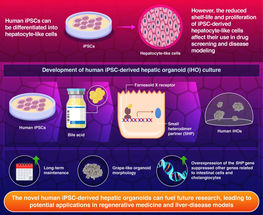Structure of protective protein in the eye lens revealed
Heat shock proteins provide protection against cataracts
The human eye lens consists of a highly concentrated mix of several proteins. Protective proteins prevent these proteins from aggregating and clumping. If this protective function fails, the lens blurs and the patient develops cataracts. Two research groups at the Department of chemistry of the Technische Universitaet Muenchen (TUM) have succeeded in explaining the molecular architecture of this kind of protective protein. Their findings, which are published online in the current early edition of PNAS (Proceedings of the National Academy of Sciences), shed new light on the work of these proteins and may be able to help in the development of new treatments.
Cells have a variety of protein complexes that manage vital tasks. The functions of these "molecular machines" depend largely on their three-dimensional structure. In the first instance, proteins are long chains of amino acids, like a long piece of woolen thread. So-called chaperones help them to fold in the desired three-dimensional form after their production. If this folding process fails, the protein thread becomes an inextricable, useless tangle.
Small heat shock proteins (sHsps) are a particularly important group of chaperones. They prevent the clumping of proteins under stress conditions. alphaB-crystallin and the related sHsp alphaA-crystallin are the main representatives of the sHsps found in humans. Whereas alphaA-crystallin mainly occurs in the eye lens, alphaB-crystallin is also very common in the brain and in the heart and muscle tissue. In the eye lens, they counteract diseases like cataracts. Malfunctions of the alphaB-crystallin in tissue cells can give rise to cancer and neurological defects, including Alzheimer's disease.
Many research groups have focused their work on the alpha-crystallins due to their medical relevance. Despite intensive efforts, up to now, none of them have managed to determine the molecular architecture of these proteins. However, TUM biochemists have now succeeded in producing alphaA-crystallins and alphaB-crystallins recombinantly in bacteria and in obtaining uniform, clearly-structured complexes. A detailed structural analysis of these proteins was carried out in cooperation with the Chemistry Department's Center of Electron Microscopy. The research groups were able to show for the first time here that, contrary to previous suppositions, alphaB-crystallin forms a defined globular structure comprising 24 subunits, which are reminiscent of a perforated soccer ball.
Thanks to the identification of the three-dimensional structure of alphaB-crystallin, which is currently being further refined, the basis has now been established for comparing healthy and disease-promoting mutants and, based on this, for clarifying the way they function. The scientists hope that this will lead to the discovery of new treatments.
Original publication: Jirka Peschek et al.; "The eye lens chaperone alpha-crystallin forms defined globular assemblies"; PNAS, Early Edition, July 27, 2009
Most read news
Topics
Organizations

Get the life science industry in your inbox
By submitting this form you agree that LUMITOS AG will send you the newsletter(s) selected above by email. Your data will not be passed on to third parties. Your data will be stored and processed in accordance with our data protection regulations. LUMITOS may contact you by email for the purpose of advertising or market and opinion surveys. You can revoke your consent at any time without giving reasons to LUMITOS AG, Ernst-Augustin-Str. 2, 12489 Berlin, Germany or by e-mail at revoke@lumitos.com with effect for the future. In addition, each email contains a link to unsubscribe from the corresponding newsletter.






















































